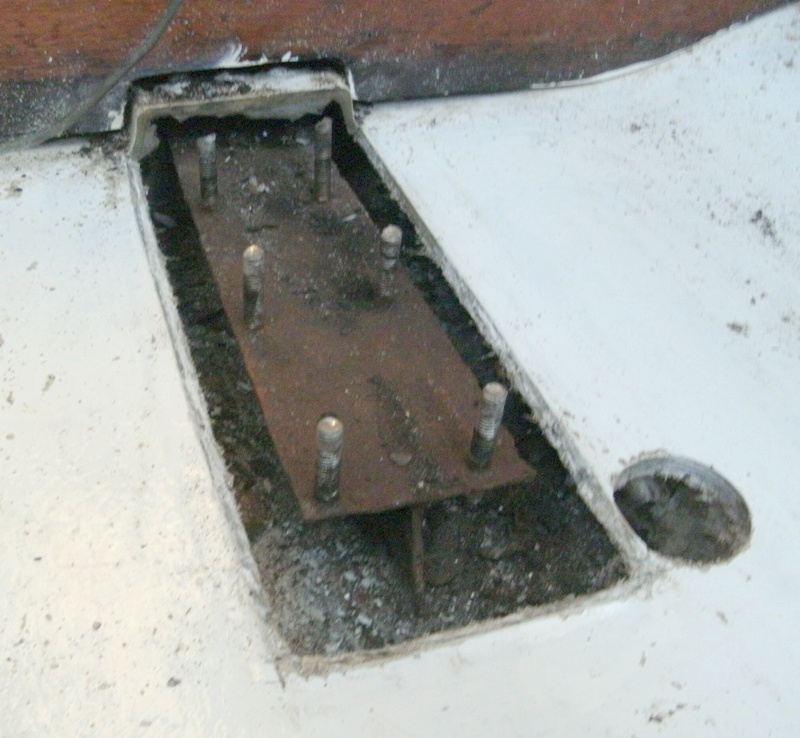No idea. Boat is 1972, pre-HIN, and the bronze plate is missing. Big genoas carry the number 18, and one may well be original. So I'm claiming Hull #18, unless somebody has better information.

Anyhoo, on the old Multiply site there are a number of discussions about this issue, but all the pictures have been lost except for Temptress', which someone (Nicholas?) saved & reposted on the Knowledge site. If anyone has more photos of this area or repair procedure, we would be very grateful for them. There were rumors Albin changed design or materials of this part in later boats, but no one could confirm it. I would wager our truss was either mill steel from the get-go, or it was galvanized but years of moisture & contact with SS and aluminum simply ate away the zinc. At any rate, it has a reputation for splitting the front edge of the keel when it rust-swells and/or crumbles. So this one has to be replaced.

The forces involved are likely not that huge, or the engineers would not have specified 1/8" metal. (One good reason to use thicker here, where weight is no issue, is to provide more corrosion margin.) A 1" wooden dowel would likely transfer the loads if it could be kept perfectly in column. Pouring the sump solid with resin would probably do it. But a bit of elegance here would not go amiss. I'm confident 1/4" or 5/16" aluminum plate would suffice, and it would resist corrosion pretty well. might even slap a sacrificial anode on it.

2x3" aluminum tubing (1/4" wall) would also carry that load, no problem; weld plates onto top and bottom.
http://www.grainger.com/product/Rect-Tubing-6ALU2
But for some reason, composites strike me as a good alternative here. No corrosion issues, no electrolysis, easy to tab to the adjoining keel and bulkheads.... Any thoughts on designing such a truss from FRP or carbon? We could lay it up from scratch, or start with pre-fab pieces of G10 or fiberglass beams or tubing.
http://www.eplastics.com/Plastic/Fiberg ... een-I-Beam
The critical areas would be where the top plate cantilevers over the vertical piece (tension) and where the vertical piece joins the foot (compression). Keep the thing from rotating, and you should have no troubles, right?

